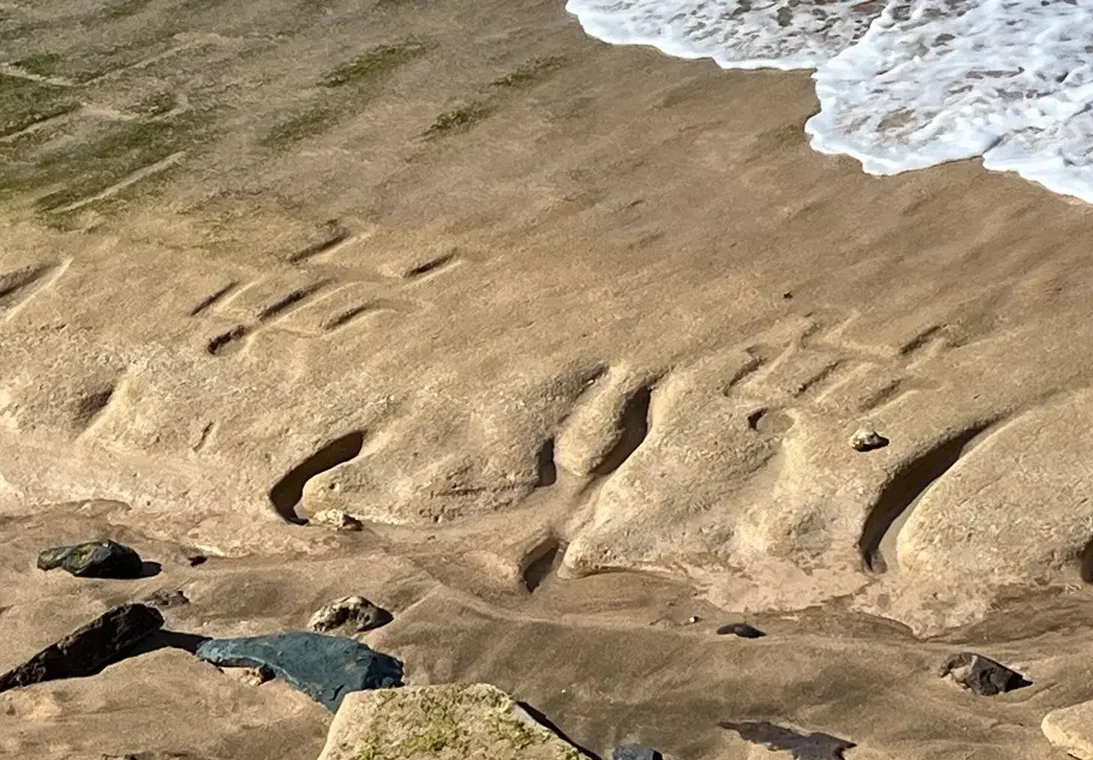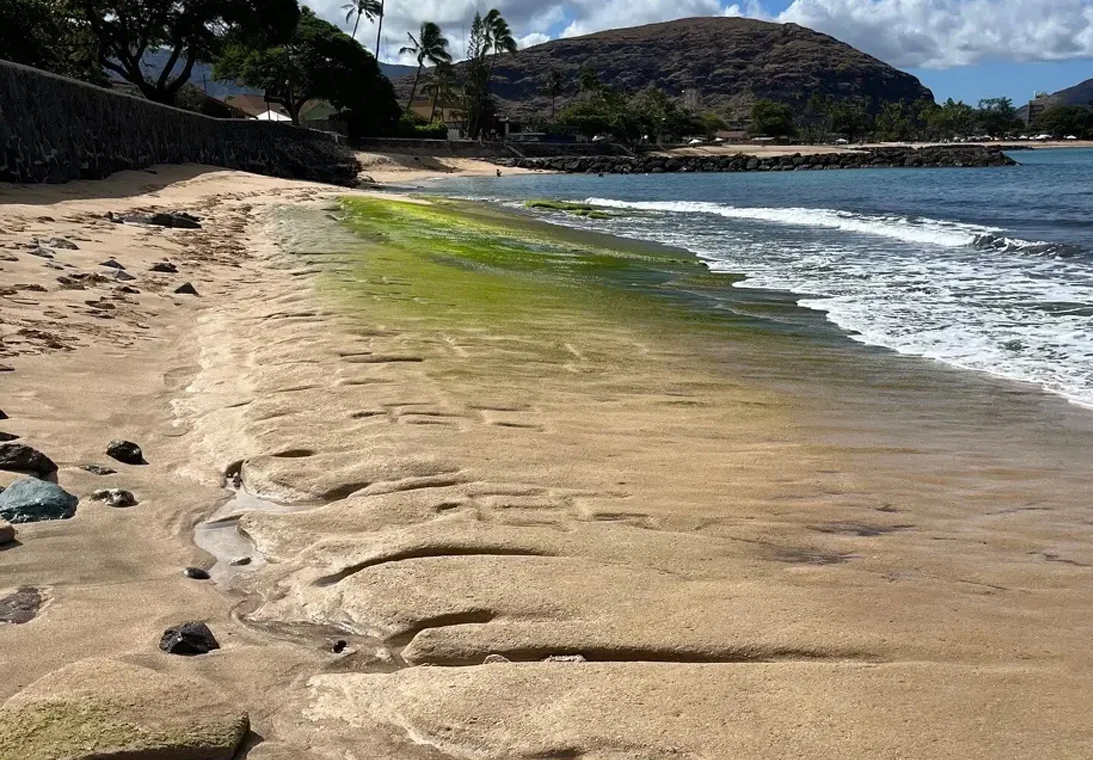A collection of ancient petroglyphs has been revealed on Oʻahu’s west shore as a result of natural coastal processes.
Believed to be over 1,000 years of age, the petroglyphs were exposed by shifting sand and ocean currents on a beach fronting a U.S. Army recreation centre.
It is uncertain when Oʻahu was first settled, but the petroglyphs were likely carved after the first migration of Polynesian people to the Hawaiian Island’s during the 10th to 11th century AD.
Carved in sandstone, the 26 petroglyphs mostly feature anthropomorphic stick figures, two of which appear to have defined fingers. The largest figure measures over 8 feet in height by 8 feet in width, however, the exact interpretation of what the figures represent is still speculated.

According to Native Hawaiian Glen Kila, it is possible that the fingered figures could depict Māui, the great culture hero and trickster in Polynesian mythology. Māui is also credited with the creation of the Hawaiian Islands, by using a magic fishhook to pull up various island groups from the oceanic depths.
“He plays a role in our moʻolelo, our stories passed down here. I say that because the way the fingers are positioned, from east to west, reflects the movement of the sun from sunrise to sunset. It’s a sacred symbol, much like the cross or other religious icons in Christianity,” explained Kila.
Nathan Wilkes, external communications chief for the U.S. Army Garrison Hawaii said that the petroglyphs are being managed by a team of specialists and archaeologists who steward the cultural resources within the Army’s installations.
Header Image Credit : U.S. Army Garrison Hawaii
Sources : U.S. Army Garrison Hawaii







